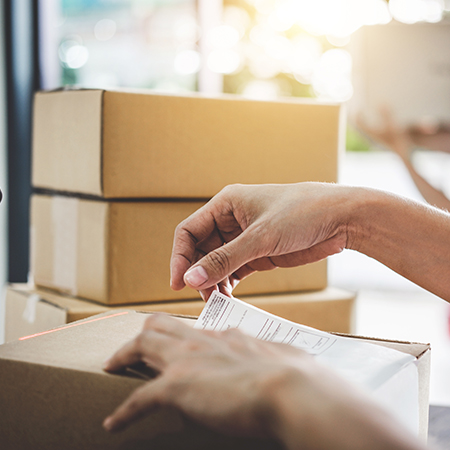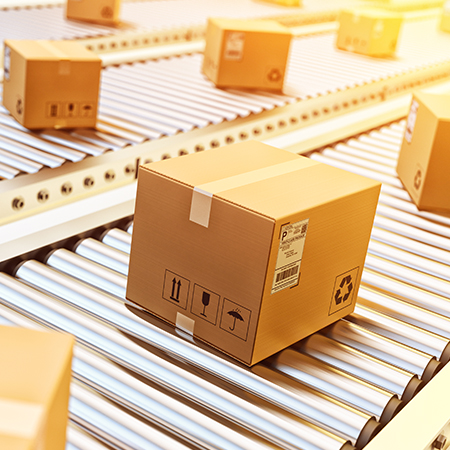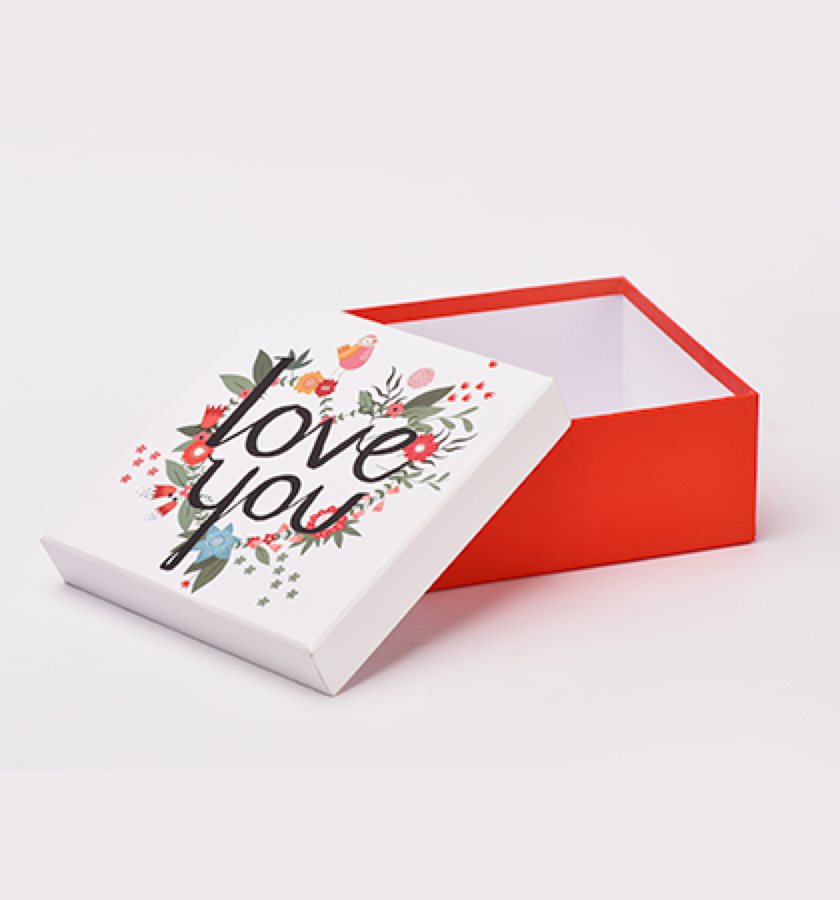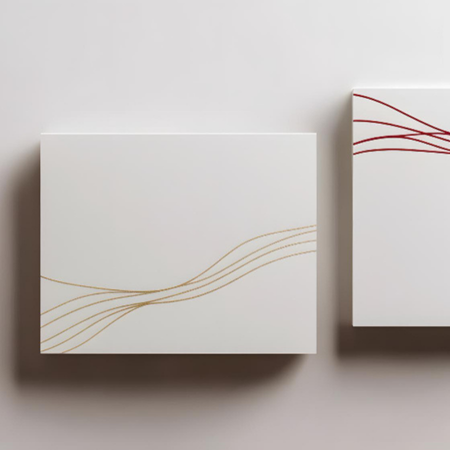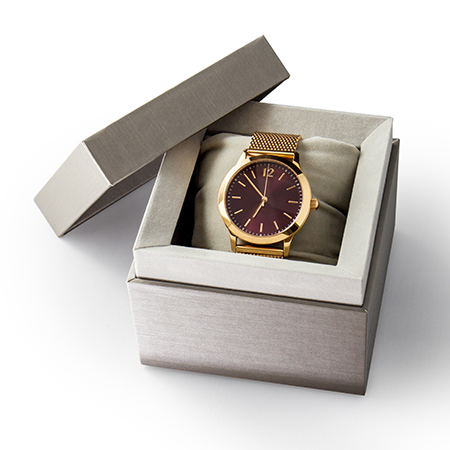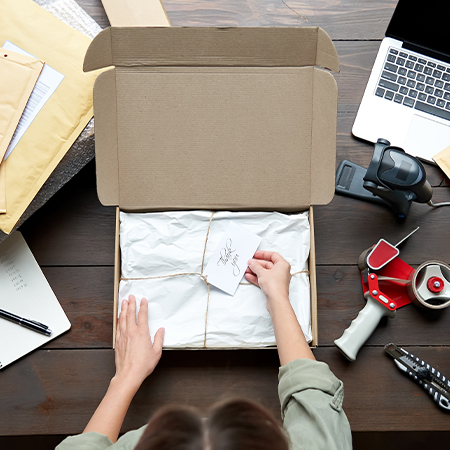We're back with even more ways of cutting down your packaging costs!
6. Remove what’s not needed
Do you include flyers, marketing material or a thank you note in your client's orders?
These things are great for your marketing department, but they are causing damage to your fulfillment department and the cost of your packaging.
All this is an added expense not only for material, but also for the time it takes to add it to each order.
Removing these elements can help dramatically reduce packaging costs.
Consider printing a thank you message inside of your product box.
Automate advertising emails that will be sent to your client after they receive their order.
This cuts the cost of the raw material as well as the times of fulfilment.
7. Utilise custom-sized packaging
One growing pain of a growing business is rapidly sourcing packaging.
As a consequence, many companies overlook the packaging and opt for a standard size box.
This type of packaging is inexpensive , readily available and quick to get and a great solution for a fledgeling business.
But while that may work at the beginning, in the long run it's not financially viable.
Oversized packaging takes up more space during delivery, so shipping nothing but air costs you more.
A box specifically designed for your product does however make better use of the available space.
Packaging that 'hugs' your product means that only the required space is used in a delivery truck, and it takes up less space in your shelves.
Custom sized packaging means less or even no need for void fill, reducing or eliminating the time and costs associated with empty space filling.
Custom packaging is a fantastic opportunity for branding too.
Whether it is shipping boxes sent to retailers or packaging sent directly to your end customer, custom packaging and branding go hand in hand with each other
8. Cut down on your void filler usage
Void filler is something you would rather not be using.
Void filler is a cost that does nothing but fill up empty space.
But if you're shipping an oddly shaped product and you've already optimized your packaging design, the use of void filler is unavoidable. It therefore needs to be designed and used with both efficiency and safety in mind so that packaging costs can be successfully reduced.
Using an insert or fitting designed for each said product is the best option to minimize empty space inside your packaging.
This keeps your product in transit directly in place, meaning less chance of damage and no need to fill in void.
A custom insert can reduce the cost of packaging as it means that secondary packaging is not needed.
It minimizes the risk of transit damage and also accelerates the packaging process.
Custom inserts have the added advantage of making a single sized box fit many products , which means less box sizes to order and store for you.
9. Consider multi-function packaging
The number of required packaging materials can grow exponentially as your business grows and implements more products.
This often results in many packaging products of similar size taking up space in shelves.
By looking at all of your packaging products, save money and try to minimize the number of unique products used.
This doesn’t necessarily mean finding a ‘one size fits all’ packaging solution, as this rarely exists.
You may have several products that fit in the smallest size box, but some leave plenty of empty space.
Rather than a unique box for that product, use your smallest box size, but place the product in a custom insert.
This frees up space on your shelves so you can place higher orders, thus ensuring a lower cost per unit.
10. Reduce your number of suppliers
Sourcing products from multiple suppliers is a great way to chew up cash that could otherwise be saved.
If you decide to change a packaging design element, working with multiple suppliers will only add to confusion.
Even the slightest modifications to the design will require you to:
● Contact multiple suppliers
● Ensure they’re aware of the change
● Modify your order to suit said changes
● Check if the changes meet the requirements of the new design
By using the one provider for all your packaging needs, there’s one point of contact for all things packaging.
Not only does this save you the trouble of contacting multiple suppliers, it can also help you to cut costs of delivery.
11. Process Optimization
Inefficiencies consume costs in any process, and suck up more money than they should.
By looking at your current packaging processes, you may find ways to speed it up, or even eliminate steps altogether.
The zoning of your warehouse is an often overlooked way to optimize a process.
If a worker has to walk in opposite directions to get tissue paper and a shipping box, then this is wasted time and money.
Your dispatch area should be versatile and set up to handle every product that goes out your door in an efficient manner.
12. Reduce packaging weight and size
You pay a delivery fee based on either the size or weight of your packaging materials.
Therefore any savings in size and weight reduction are savings in your back pocket.
White label products which come in their own packaging, textiles and dry goods are often self-sustainable.
That means they do not need a thick corrugated box to be delivered to the end consumer.
Less weight means more delivery savings in your pocket, and the smaller size means more space on your shelves.
13. Follow stock closer
Too much stock ties up money on your shelves and not enough leads to shortages and delays in fulfilling orders.
For this reason you have to know exactly when to reorder your packaging.
Working with a vendor who has set production and delivery times means you know exactly how far you need to order your packaging in advance.
Use an inventory management system that can automatically place a packaging order when it has hit a minimum threshold.
Such software means you'll have to spend less time counting stock numbers manually and you're always aware of what's at hand.
You can tie up less capital on shelves with a closer eye on stock numbers, and make the most of the space you have.
Final Thoughts
There are many savings to be made when evaluating your supply line for packaging. The closer you look, the easier a reduction in packaging costs is for you.
But it’s important to remember the fine line between saving money and cost-cutting.
The former is what you are after, whereas in the long run, the latter ends up being more expensive.

